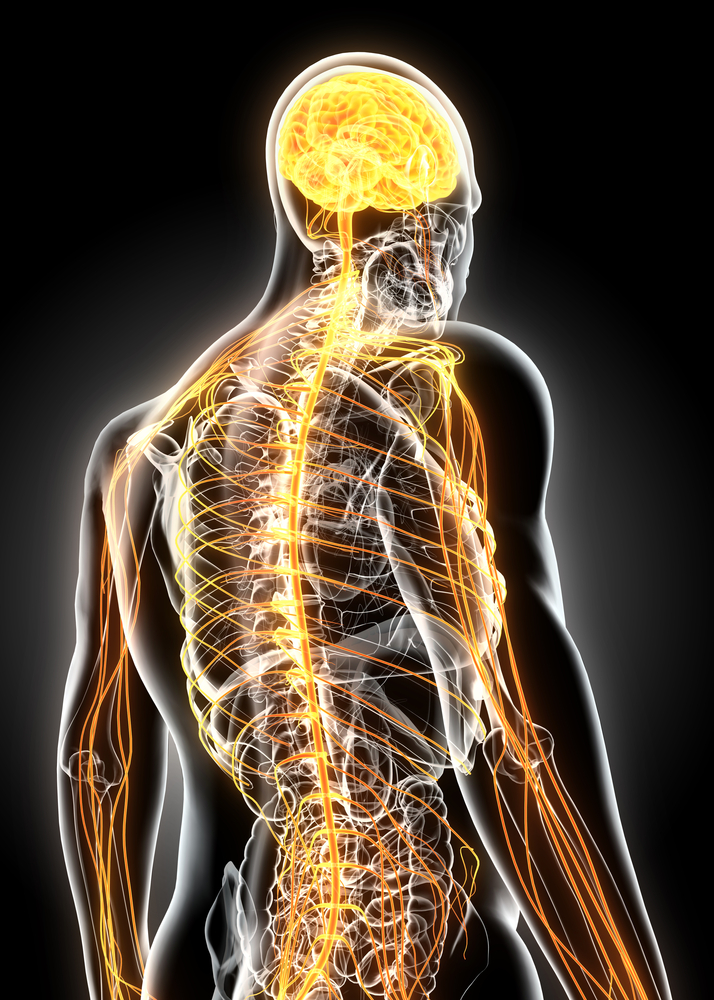
Dorsal Root Ganglion Neuromodulation
Chronic pain is not like acute pain. With acute pain, there is an injury or illness that has stimulated a pain neuron that transmits a pain signal to the brain. Chronic pain, on the other hand, does not have a tangible root cause; in many cases, the pain signals are due to errors in the nervous system itself.
With chronic pain conditions like fibromyalgia or Complex Regional Pain Syndrome (CRPS), the nerves misinterpret stimuli as pain. To treat these conditions, physicians must soothe or block overactive nerves.
One of the ways of achieving this is by stimulating certain nerves so that they cannot transmit a pain impulse. By activating these nerves with a low-intensity electrical current, pain signals can be blocked from reaching the brain.
Dorsal Root Ganglia
To understand what dorsal root ganglia are, you must first learn about the nervous system. The spinal column is the main nerve highway between the brain and the sensory and motor neurons found in the body. The spinal cord is comprised of spinal nerves that connect peripheral nerves to the brain.
Close to the intersection of spinal nerves and peripheral nerves are nerve clusters called the dorsal root ganglia or DRG. These nerve clusters are located vey close to the spinal column. They collect and transmit pain signals very quickly to the spinal cord, enabling the body to react almost instantaneously to painful stimuli. Dorsal root ganglia are instrumental in the rapid response when you touch something that is painful.
The dorsal root ganglia have become a focus in pain medicine because of its function as a gateway for pain signals to the brain. The DRG serve as a threshold junction for sensory information and acts as the “pain filtration system”.
Neuromodulation
In the 1960s, physicians developed the first neuromodulation techniques targeting neural structures. By the end of the 1970s, these techniques had been modified to apply current to the spinal cord instead.
Neuromodulation is simply the application of electricity or pharmacological agents to a nerve to disrupt its activity. Neuromodulation devices have been used to treat a variety of health conditions including
- Headaches
- Tremors
- Spinal cord damage
- Insomnia
- Depression
- Back pain
- Neuropathic pain
- Tourette Syndrome
- Urinary incontinence
How Does DRG Neuromodulation Work?
Because the dorsal root ganglia are located regularly along the spinal column and control the nerves of various regions, stimulating them can block pain signals from the corresponding region. This has made DRG modulation an effective therapy for pain conditions like Complex Regional Pain Syndrome (CRPS) which is often restricted to the region in which the original nerve injury occurred.
Pain does not need to originate in the peripheral nerves. If there is damage or irritation of the dorsal root ganglion itself, then the ganglion may be the cause of the pain.
Although the exact mechanism that enable neuromodulation is not fully understood, there are two theories. The first theory says that the electric current activates the DRG neurons which prevents it from activating again when a pain impulse reaches it. The second theory suggests that stimulating the nerve boosts the production of endorphins which are your body’s natural painkillers.
The DRG Neuromodulation Procedure
One of the leaders in the field of pain medicine technology, Abbott recently unveiled the Proclaim DRG Neurostimulation System. Scientific studies of the Proclaim DRG Neurostimulation System evaluated CRPS patients for 12 months following the procedure. Almost 75 percent of patients reported significant pain mitigation as opposed to about 53 percent of patients who underwent spinal cord stimulation.
Unlike prior neuromodulation devices that targeted the brain or spinal nerves which are considerably less accessible, the DRG neuromodulation system targets dorsal root ganglia that are found outside the spine. That may explain why almost a third of all patients who tried out the Proclaim DRG Neurostimulation System had an 80 percent reduction in pain severity. The Proclaim system is intended for patients with moderate to severe pain.
The Proclaim DRG Neurostimulation System involves multiple minimally invasive, outpatient procedures. Initially, your physician will administer a nerve block injection. A numbing agent will be injected into the dorsal root ganglion to ensure that the right nerve cluster has been identified. If there is appropriate pain relief, then very fine wires called leads will be implanted under the skin near the dorsal root ganglion. A control device along with a battery will also be implanted along with the leads.
Immediately, after the procedure, an Abbott representative will work in conjunction with your physician to program the device. They will instruct you as to how you can modify the neuromodulation features using a smartphone app.
The Proclaim system utilizes an advanced battery using limited power (micro amps versus mini amps) with a life expectancy of > 7 years at nominal settings. This extended life should limit the need for frequent battery replacements. Furthermore, this device offers upgradability without the need for complete device replacement so further reducing the likelihood of additional procedures.
Who Should Consider the Proclaim DRG Neurostimulation System?
The Proclaim DRG Neurostimulation System was designed to help people with Complex Regional Pain Syndrome and chronic neuropathic pain in the foot, knee, hip, legs, or groin. However, like similar neurostimulation techniques, the Proclaim system is likely to be used to treat many other pain conditions including chronic back or neck pain as well as certain kinds of neuropathic pain.
People who would not be good candidates for the Proclaim DRG Neurostimulation System include
- Patients incapable of operating the system
- Patients who carry high risks associated with surgical procedures
- Patients who did not experience pain relief from the trial nerve block
- Patients who are pregnant
- Patients younger than 18 years old
Article written by: Dr. Robert Moghim – CEO/Founder Colorado Pain Care
M.D. Disclaimer: The views expressed in this article are the personal views of Robert Moghim, M.D. and do not necessarily represent and are not intended to represent the views of the company or its employees. The information contained in this article does not constitute medical advice, nor does reading or accessing this information create a patient-provider relationship. Comments that you post will be shared with all visitors to this page. The comment feature is not governed by HIPAA, and you should not post any of your private health information.



